'There's never a safe place': Colorado school training kindergartners to high schoolers to respond to an active shooter
The program aims to instill children with confidence to make quick decisions.
Amelia Guana is 5 years old.
She believes in superheroes, but she also wonders about “a bad guy coming” to her school.
“That’s why we have lock out,” said the girl, wearing an orange flower headband.
In a classroom filled with smiling and giggling children, art work on the walls and brightly colored chairs, a new reality unfolded recently for Amelia and the kindergarteners of Pinnacle Charter School outside Denver -- a drill to help them deal with the specter of an active shooter.
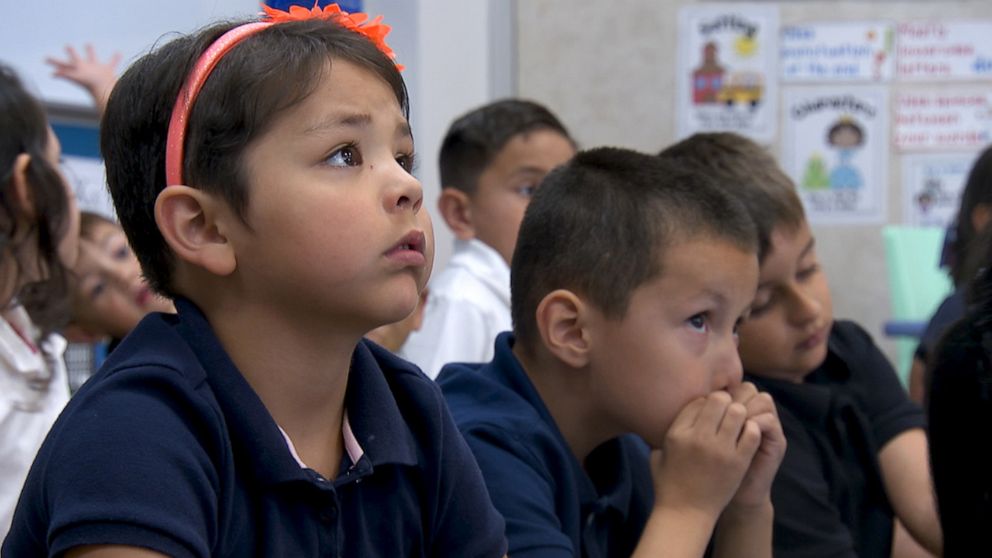
Told to hide and be "quiet as a mouse," peek like a turtle to check if the coast is clear and follow their teachers like ducklings, the training had overtones of storytime. But at its core is a frightening reality.
"It's scary to think that there's never a safe place," said Cynthia Enriquez, whose son, Joshua Ruiz, a sixth grader at the school, also underwent the training. "You can't even go to the grocery store or send your kids to school or go to the movies without having to worry about, 'What if?'"
From kindergartners to high school seniors, all of the roughly 2,000 students at Pinnacle Charter School began this school year with a program teaching how to react in an active shooter scenario.
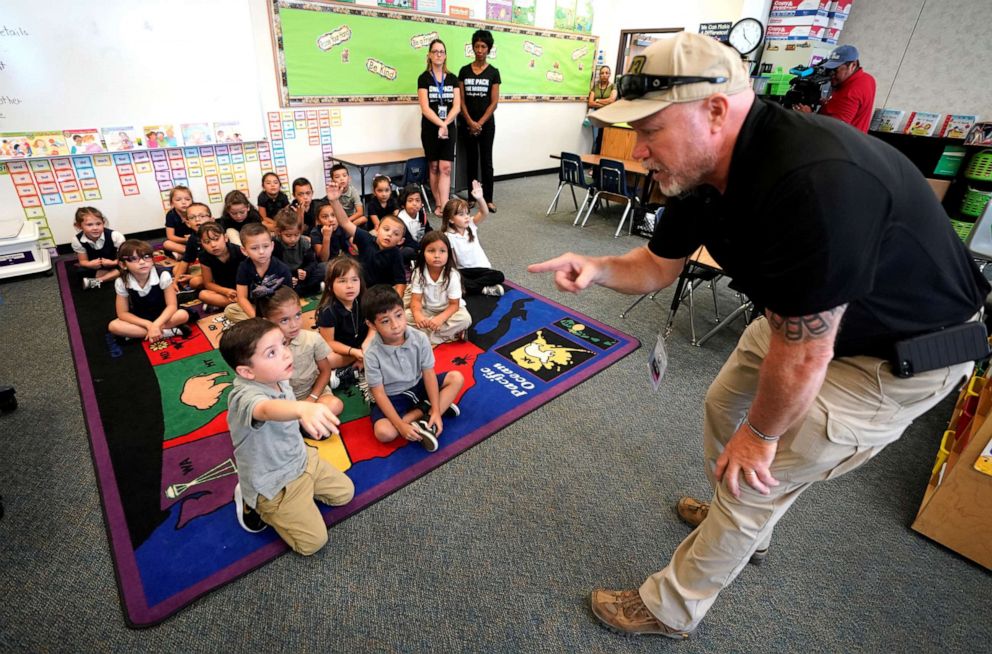
Active shooter drills are a growing and controversial part of the education system in the United States with an estimated 67 percent of districts conducting active shooter exercises, according to the United States Government Accountability Office (GAO). While many say the drills are necessary to confront the reality of the mass shooter era, others question their effectiveness and say that they stoke fear and create the potential for psychological damage unnecessarily.
The shootings scare me the most 'cause school is where I'm at, like, 24/7.
'Unfortunately it's come to this'
The program, run by TAC*ONE Consulting, aims to give children the confidence that they'll need to make smart decisions quickly in stressful situations. Staff members at Pinnacle were trained, too.
The age-specific active shooter curriculum, with levels of intensity tailored to each grade level, was held in school the last week of August. Students were aware of the drills before they happened.
Joshua said he and his classmates practiced evacuating and barricading, as well as self-defense training and how to incapacitate a gunman if necessary.
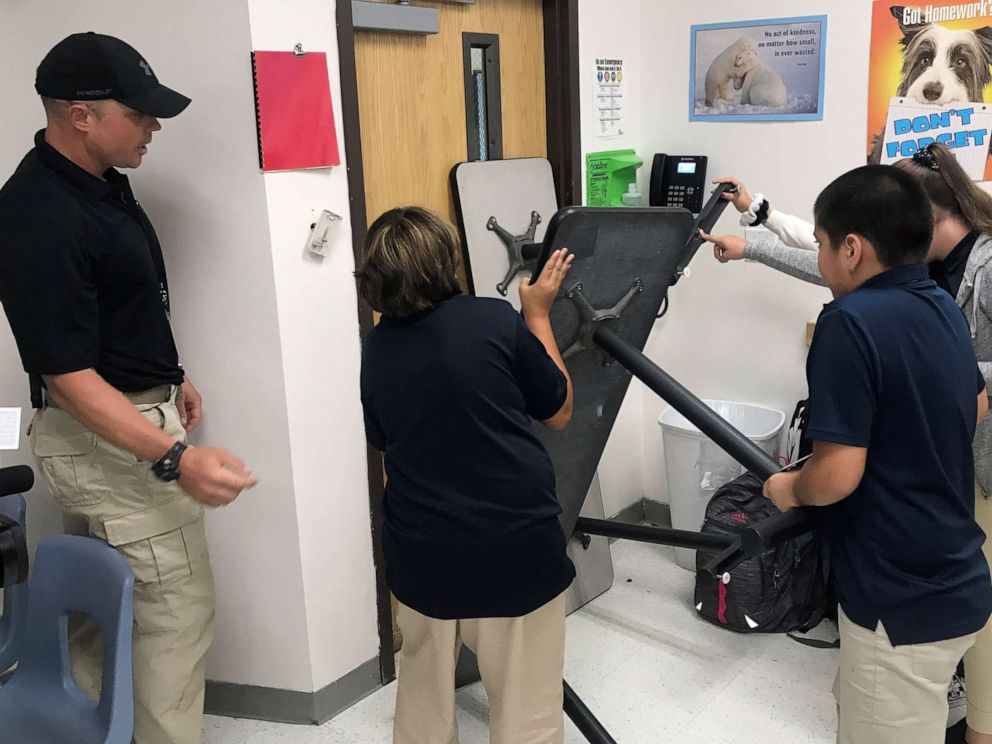
"Shootings scare me the most 'cause school is where I'm at, like, 24/7," Joshua said. "So it's like, what if that were to happen at our school? But that's why we're doing this training so we know and can prepare ourselves."
"I had mixed feelings about the training. It's sad and it shouldn't be something our children should have to think about," his mom told ABC News. "It's taking away from their innocence."
Enriquez said she worries every day about her son's safety.
"Unfortunately it's come to this," she said. "Before school was a safe place, and that's where we were most secure about our children being all day. But now that, you know, the shootings and just the world being an ugly place, I think it's really important for them to have this, you know, knowledge on how to react."
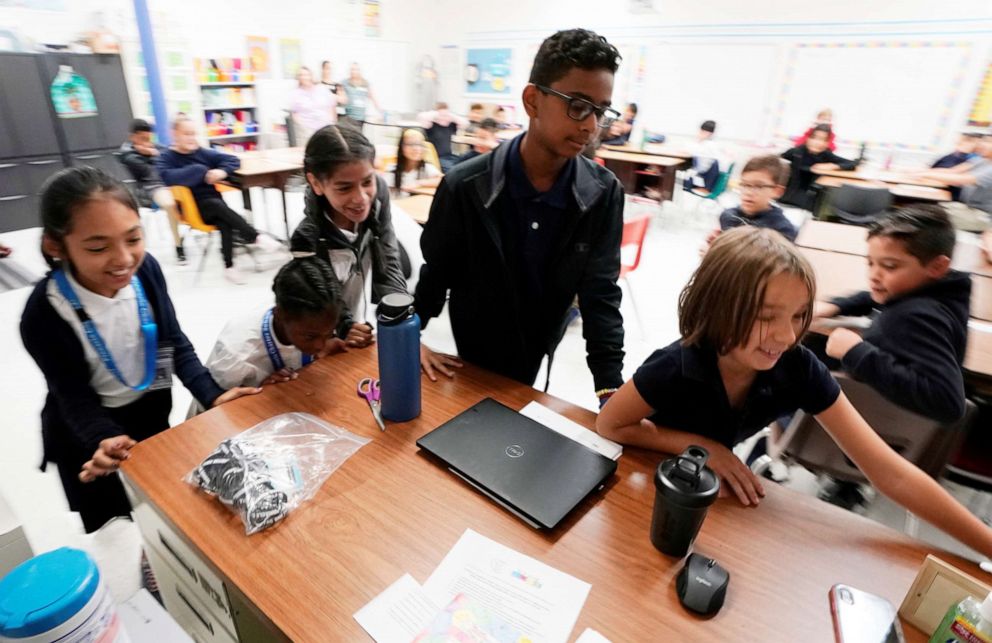
Spate of mass shootings
Despite concerns the drills could shatter their innocence or stir up anxiety, kindergartners and elementary schoolers were included because the training is expected to build on itself over the years, said Chad Miller, Pinnacle Charter School's CEO.
For the youngest kids, instructors gingerly start the discussion by asking generally about how to stay safe in schools. Kindergartners are taught how to find a good hiding spot and listen to their teachers to evacuate safely.
It makes me angry that I always have to think about this.
"We start with a very open discussion," Joe Deedon, a former sheriff's deputy and SWAT team member who founded TAC*ONE, told ABC News. "We let them lead the conversation and it blows parents' minds, it blows teachers' minds... how much they truly know about the topic, even though we try to shelter them."
Miller says the kindergartners are spared from more detailed talk that might disturb them. “We're not going to talk about people dying and active shooters and those types of things," he said. "It's a danger. And we need to all be on the same page and acting as a team so that we can keep each other safe."
Joshua said he watches the news with his mom because "you need to know what's going on... especially kids."
But knowledge doesn't always feel powerful. Joshua was scared to go to the movies for years after the Aurora movie theater shooting in 2012 his mom said.
"It makes me angry that I always have to think about this," Joshua said, "because every time I hear the [intercom] announcements [in class] it's like, 'What is it gonna say?' My stomach has a weird feeling 'cause you never know."
Mass shootings on the rise
The active shooter trend appears to be on the rise nationwide, according to FBI data, and six in 10 people are worried about a mass shooting in their community, according to a new ABC News/Washington Post poll.
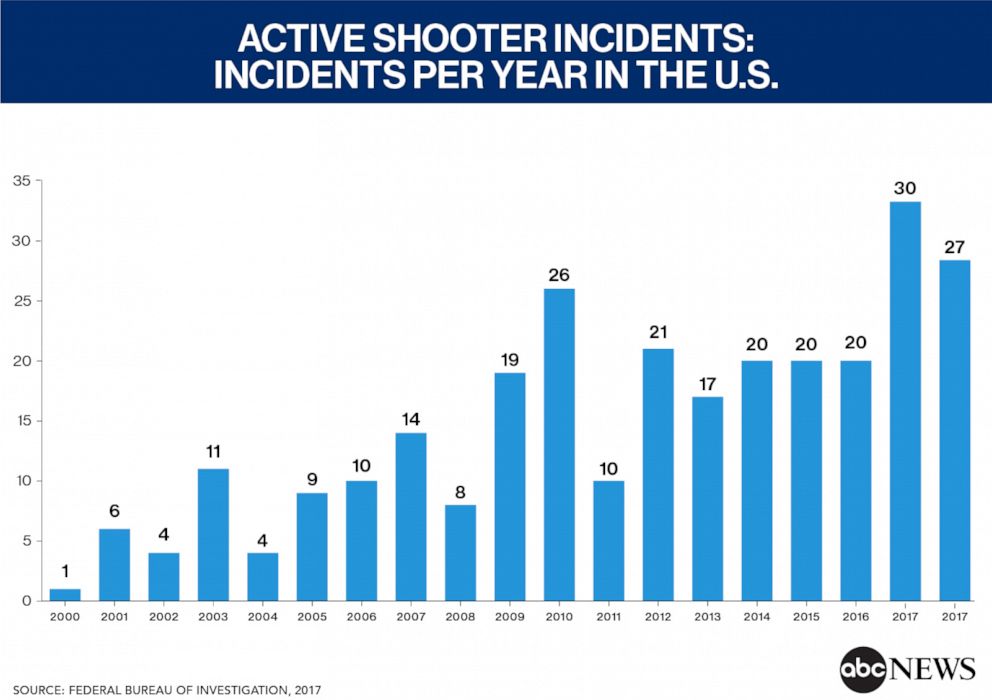
Of the 27 active shooter incidents in the country last year, four were at a high school and one was at a middle school. Those five school shootings left a total of 29 people killed and 52 hurt, according to the FBI.
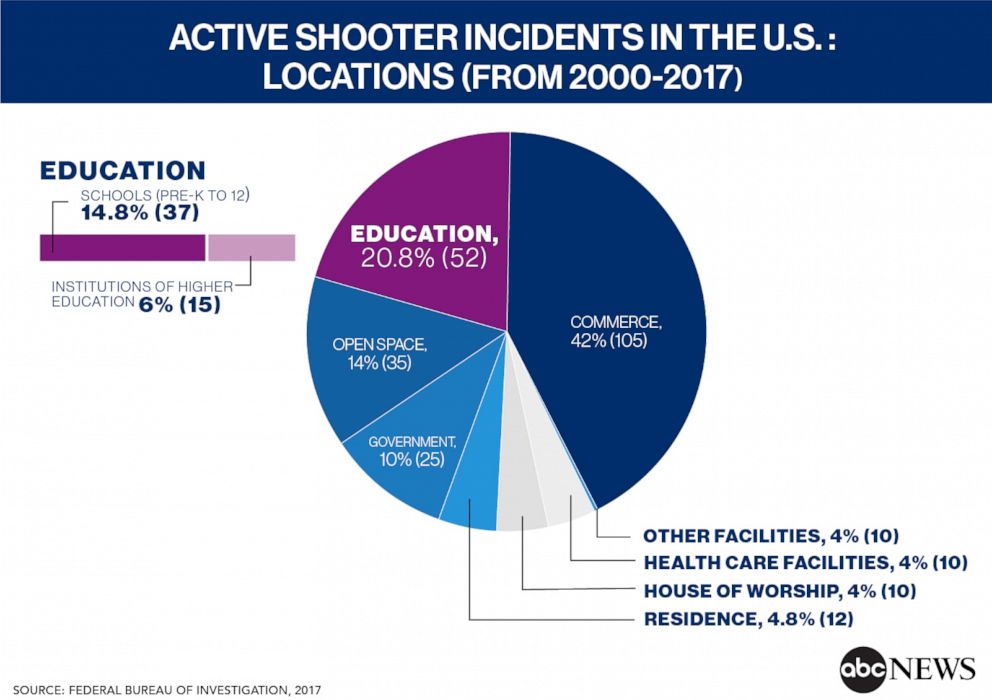
There were 20 shootings each in 2014-2016 and 30 in 2017. But the number of casualties (killed and wounded) skyrocketed in 2017, according to FBI data, from 214 the year before to 729 that year. In 2017, a gunman opened fire on the Vegas strip, killing 58 and wounding 489.
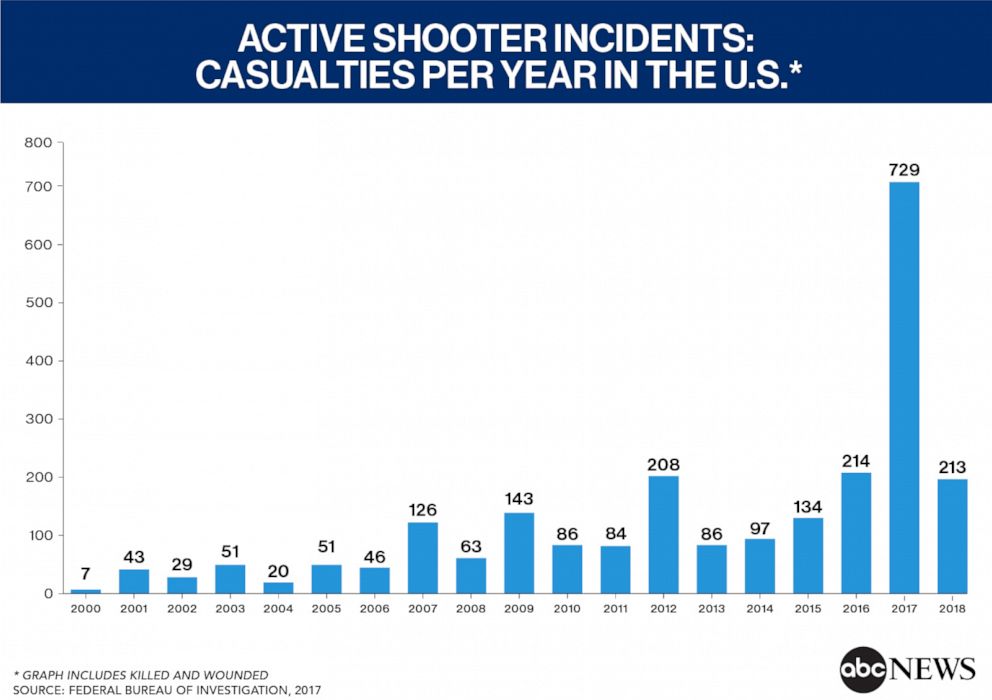
Colorado is no stranger to school shootings.
In April 1999, two students opened fire at Columbine High School in Littleton, gunning down 12 of their fellow students and a teacher before killing themselves.
This May, one teenager was shot dead at STEM School Highlands Ranch, a Denver area charter school.
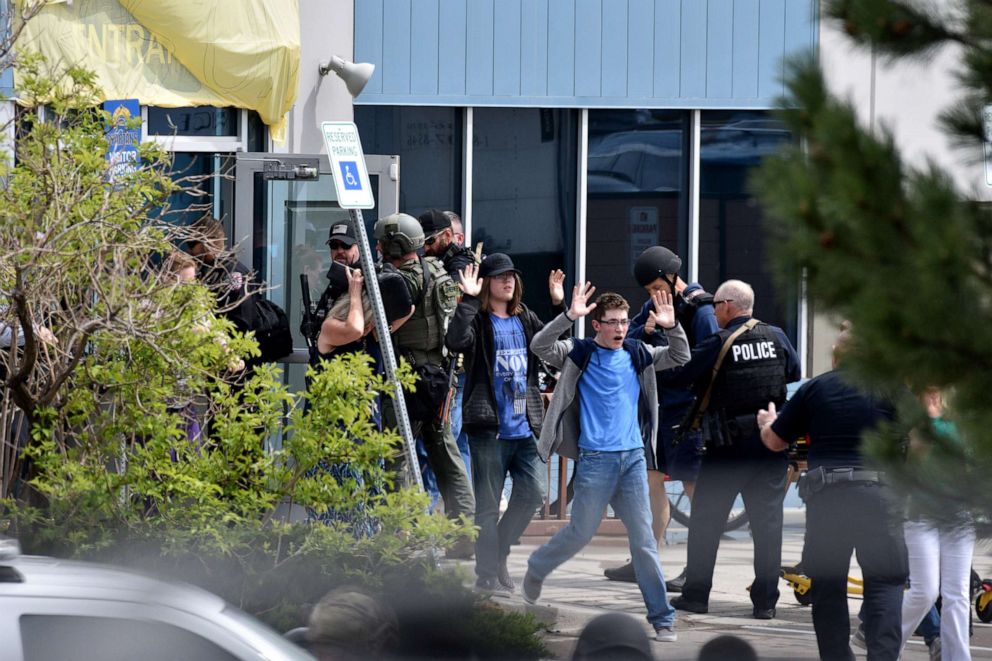
One of the impacts of the mass shooting era has been on emergency drills in schools.
About 95 percent of schools had lockdown drills in the 2015-16 school year and 92 percent had written shooting or active shooter plans in place, according to the National Center for Education Statistics.
But a lower percentage -- about two-thirds -- conducted active shooter drills per the GAO. As of the March 2016 report, nine states required districts to conduct active shooter drills.
"While our survey did not ask why certain drills were required more than others, Education officials told us that as part of emergency management planning, schools need to assess the likelihood of active shooter incidents, which present a smaller risk than other emergencies," the GAO report said.
The active shooter drills have sparked some criticism. For instance, in Indiana, "terrified" teachers were shot with pellets during a shooting simulation earlier this year.
A 2015 paper in the Children's Legal Rights Journal notes that legislation prescribing drills is "vague" and that "this discretion has led to a number of problems with heightened simulations that are often terrifying to the students, especially when those simulation drills are carried out without any advance notice from the school district."
James Alan Fox, The Lipman Family Professor of Criminology, Law and Public Policy at Northeastern University said that while he supports students talking through active shooter scenarios, drills are "overboard."
He says on average 30 students are killed each year commuting to school, like in pedestrian or bike or school bus crashes -- but bike helmets are not required in all states.
“Excessive security and overuse of active shooter drills can incite fear as opposed to alleviate it,” he told ABC News. “I don’t believe that it serves a good purpose to have kids repeatedly go through drills, even things like barricading doors and crouching in the dark, it’s just very scary for kids.”
But he does support drills for teachers. He made the comparison to airlines -- when passengers get on a plane many don’t pay attention to the flight attendant’s safety announcement. “We all assume that the crew has been trained and if something bad happens they will get on the PA and they’ll tell us what to do,” he said.
As the Centers for Disease Control and Prevention notes and critics often cite, school shootings are exceedingly rare with school-associated homicides "consistently" accounting for less than 2% of youth homicides, according to a study of incidents from 1994-2018. Of the school-associated homicides during that period, 90 percent only involved one victim, the CDC said in its report.
While the rate of single-victim homicides have stayed largely the same during that time period, multiple-victim homicides, the cases that tend to make headlines, have increased "significantly" from June 2009 to the 2017-18 school year, the CDC said.
Despite the rarity of school shootings, "they are devastating for families, schools, and entire communities," the CDC said and the number remains "unacceptably high."
Time for a change
Miller, Pinnacle Charter School's CEO, said after the STEM shooting he knew it was time for a change in preparedness. Kids regularly practice fire and tornado drills, Miller said, yet he feels an active shooter may be a more likely threat in schools today.
Pinnacle Charter School used to conduct mock lockdowns in the same manner many other schools do across the country, Miller said, but he realized that those drills -- led by teachers -- left students scared and anxious.
"It just made sense to bring in that empowerment piece to this," Miller said -- because if children are facing an active shooter, they must be decision makers, too.
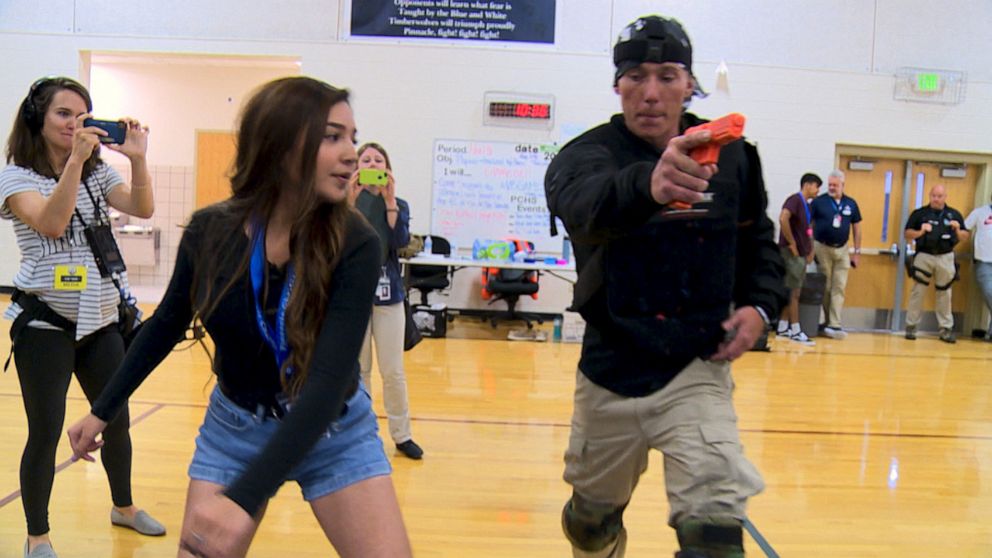
Deedon said from his experience most schools' lockdown drills only teach students how to do just that -- lock down in a room. He said the problem with offering just one option is if locking down doesn't stop the threat, students tend to freeze.
"Whatever they do within the 15, 20 seconds of an event is gonna be extremely critical," Deedon said.
Instead of adding to students' stress, Deedon said, "Our training's gonna build empowerment and give them the confidence to make good decisions under pressure.”
Even kindergarten
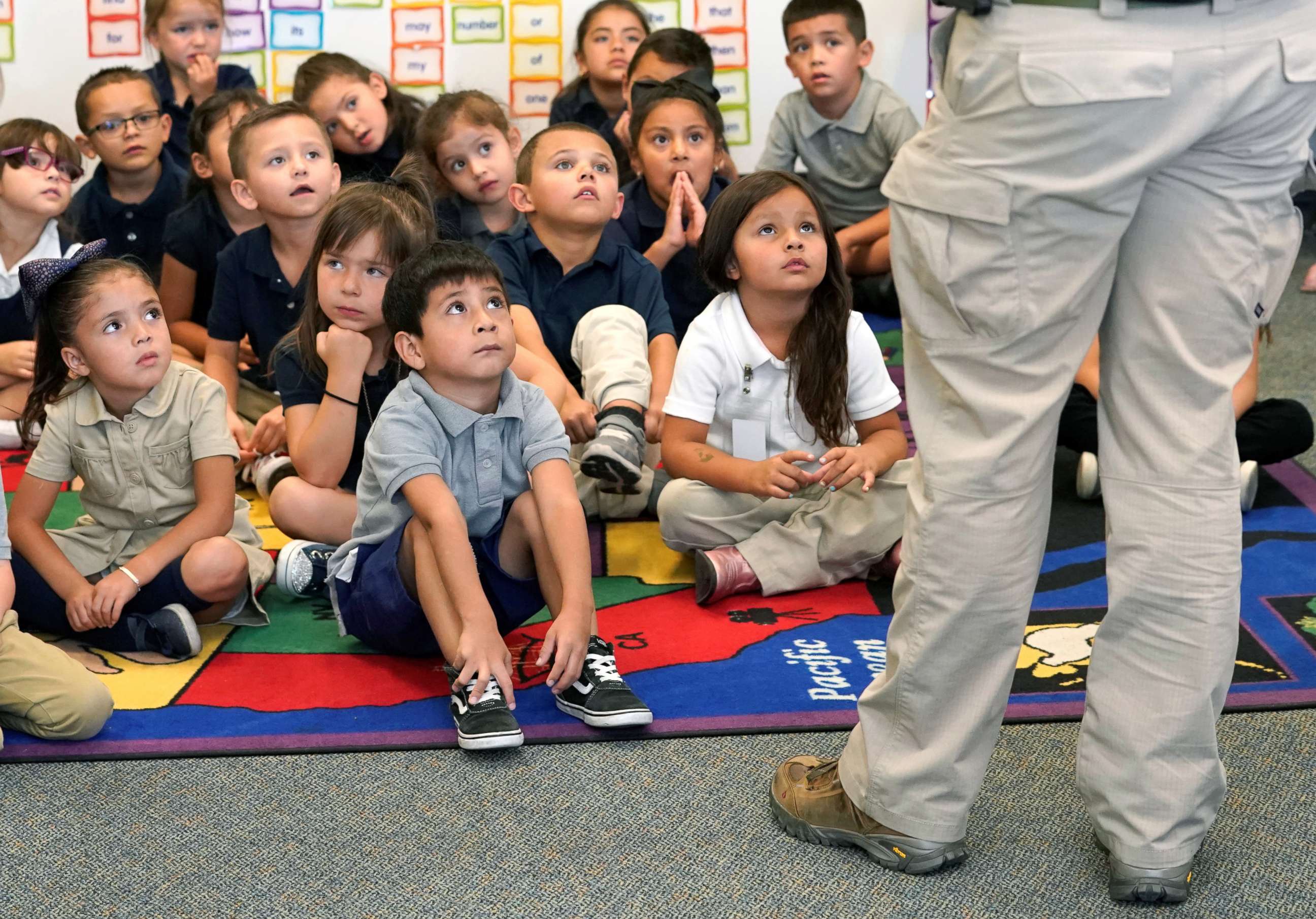
As Pinnacle Charter School kindergartners sat on the floor of their bright-colored classroom, Deedon folded himself onto a kid-sized chair, leading them in a discussion on hiding spots and evacuations.
"It's very low stress, obviously," Deedon said. "They can still work together, and that's the biggest thing."
“We have been discussing how when bad things happen, that it doesn’t happen to everybody,” said Samantha Davis, Amelia Guana's mom. “I don’t like having to have them go through it, but with the world now I’d rather them learn at this age, ‘cause as they get older it’ll be easier for them."
“I think it’s a really good thing for them to start learning," she added. "It makes me feel more at ease knowing that they know what to do.”
Amelia’s kindergarten teacher, Tara Martin, has been at Pinnacle for eight years. She says the training has made her and her kids as safe as possible, but says she has seen how the threat of a school shooting weighs on young minds.
“It was right after we had a lockdown at our school and they asked if they were going to die,” Martin said. “It makes me want to cry I it. It gets you right in the heart, and you know just thinking that a 5-year-old can picture themselves have been in a situation where they're going to die or somebody's going to kill them is very traumatizing to you.”
'Zero anxiety, zero fear'
Meanwhile, older students were taught how to barricade themselves in classrooms and how to fight back.
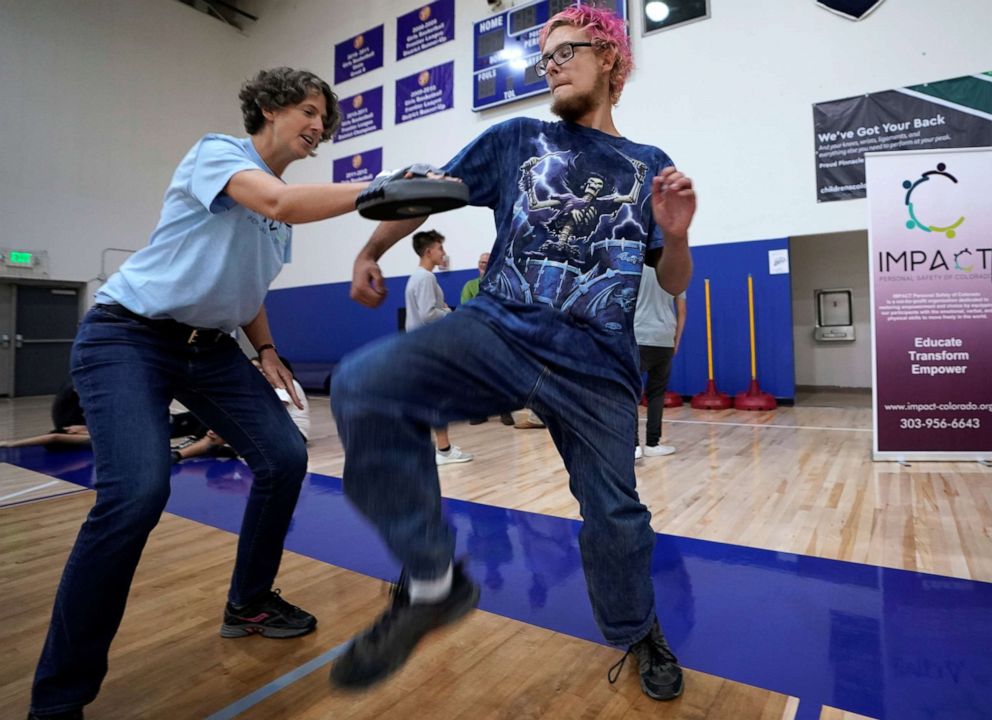
In one fifth grade class, students were taught to work together to quickly pile desks against the door, in the hope the makeshift barricade would convince a gunman to move on.
“We teach them to identify the most realistic object that they could quickly move,” Deedon said. “We tell the kids, ‘hey it's not Hollywood, we're not trying to make this door bulletproof.’ All I want is 6 feet of stuff high and 25 feet deep, that weighs 800 pounds.”
They also learned a "calculated evacuation" to avoid "running blindly in the halls" in a panic, Deedon said -- the same way police officers are taught to move through a building without backup.
These skills can be applied beyond the school walls, Deedon stressed -- students can use what they're learning if faced with a shooting in a mall or movie theater.
The high schoolers' training also included examining decisions made by students during the 2018 shooting at Marjory Stoneman Douglas High School in Parkland, Florida, where 17 people were killed.
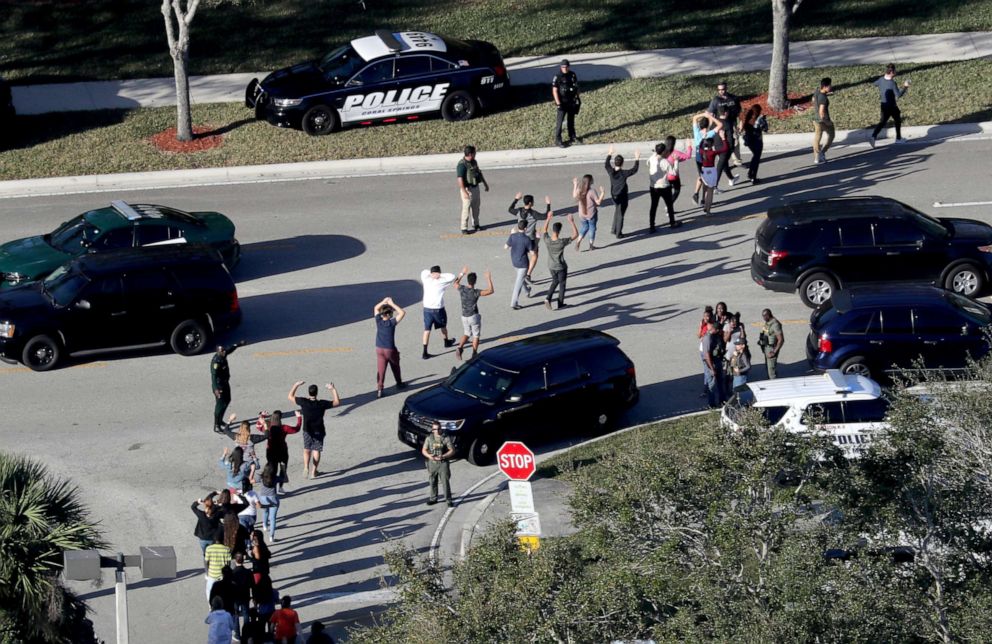
"They can run that scenario through in their own mind and understand how they would react," said Miller. "Could this type of training helped in that situation? I don't know. But I hope it would have."
During the new training Miller said he saw a change on his students' faces -- "zero anxiety, zero fear."
"I think now you see a bunch of empowered kids walking around," he said. "They're engaged, they understand why they're doing this."
Though some may find the training extreme for children, to Miller, it may be lifesaving.
"Are we gonna bury our head in the sand and hope for the best?," he asked. "Or are we gonna give our kids the training so they're empowered, whether it's here or outside of here, that they can hopefully save their lives."
ABC News' Luis Yordan contributed to this report.




